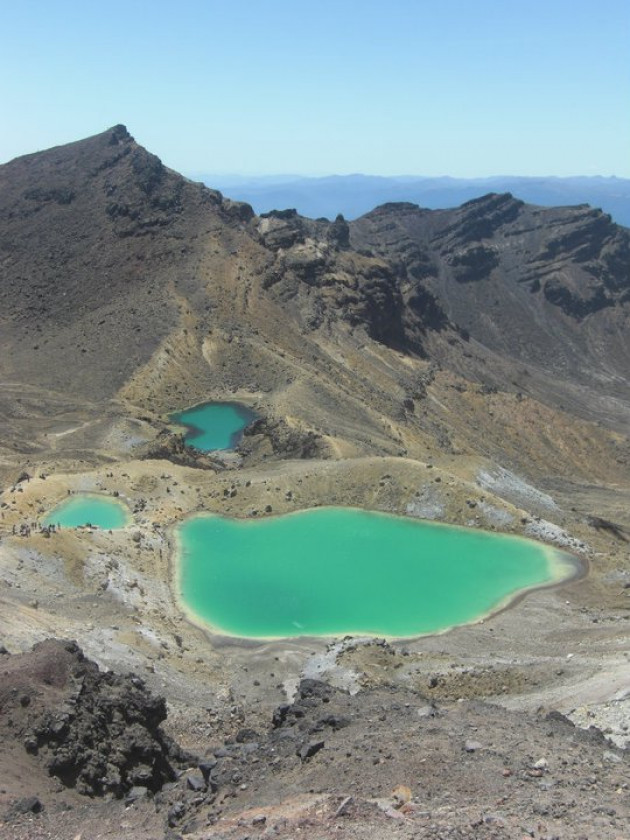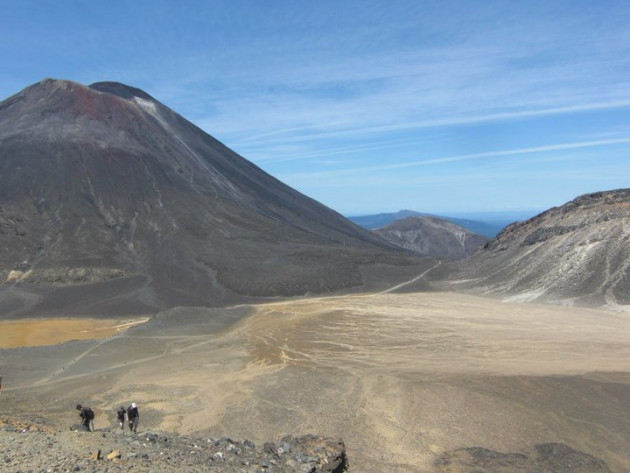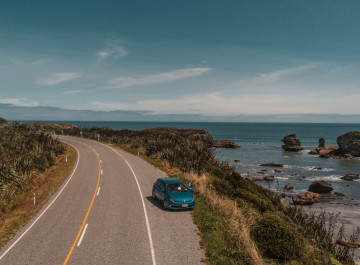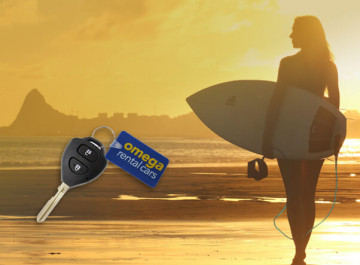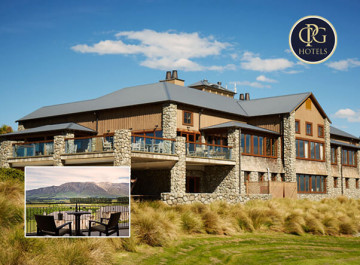The Tongariro Alpine Crossing
New Zealand gets a lot of rain, so we knew that attempting the central North Island’s Tongariro Alpine Crossing in January was taking a risk with the weather. Friends who had travelled out of their way to the World Heritage site—hundreds of kilometres from any major towns—had come home disappointed, unable to finish the trek, or even start it because of bad weather. But, as it is considered one of the best day hikes in the world, I knew it would be worth the risk. We got lucky.
We picked up our Omega rental car from Auckland and drove the 350 kilometres to the Tongariro National Park. At a leisurely pace this took all day, but it is worth stopping to take in the scenery through the King Country and along the high plateau of the Desert Road. As it was just after New Year—peak tourist season in New Zealand—I was concerned about not having booked any accommodation. I needn’t have worried, as the tiny settlement called National Park Village had plenty of accommodation available, from cheap dorm rooms to more luxurious lodges. This is the beauty of travelling in New Zealand: even in high season there are never many people around.
To access the trailhead of the Tongariro Crossing you have to get a bus from National Park. These can be arranged at your hotel. Twenty-five kilometres and a full day’s walk was ahead of us, so we packed lunch and snacks, plenty of water, sunscreen, hats and basic first aid kits. Had the weather forecast not been for uninterrupted blue skies without a spot of rain, it would’ve been wise to pack extra warm and waterproof layers.
The walk is certainly challenging in places—the ‘devil’s staircase’, a solidified lava flow early in the trek, is aptly named. But once that is passed, the ups and downs over the craters within the giant active volcano are more moderate, and the rocky, barren moonscapes put all physical difficulties out of mind. Highlights include ascending the various crater peaks and looking down at the bright, turquoise-blue crater lakes. We ate our packed lunches at their side, not minding at all that our sandwiches had become soggy and our juice warm. The peak of Mount Ngaruhoe can be scaled as an optional extra, with the promise of even more outstanding views, but you’d have to be very fit and fast to attempt that and still make the bus home.
When tackling the uphill sections of the trek it was hard to imagine that the last couple of hours, steadily downhill through cool, mossy bush, would be the most challenging. The gradual decline was relentless and very hard on the knees. But the muscular aches and pains of the next day were absolutely worth the views and the sense of accomplishment at finishing the challenging trek.
Not wanting to drive immediately back to Auckland, we detoured along the west coast of the North Island and stopped for the night in a small seaside town named Kawhia, south of the famous surf beach, Raglan. Enjoying the peace of this unspoilt town, where the only noise came from the local boys jumping off the wharf, I told a shop attendant what a lovely town she called home.
“Yeah, but it’s a bit crowded at the moment. Usually it’s quiet!” she replied. That’s the beauty of summer holidays in New Zealand.
Related posts you may like:
Things to see and do in Auckland City
Auckland Botanical Gardens - Spectacular in Spring!
Vin Alto Vineyard, Clevedon, Auckland
This fantastic story was written and sent to us by Elen Turner as part of our Summer Holiday Writing Competition. Thank you Elen, I am sure this will inspire others to make the crossing and enjoy the same sense of accomplishment.
